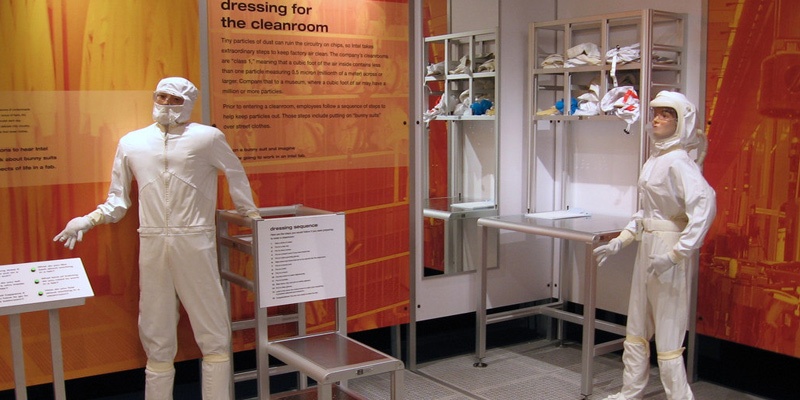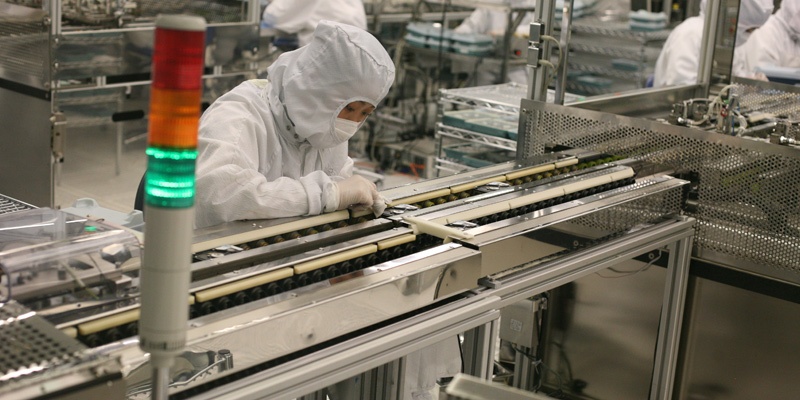Cleanroom classifications are most commonly based on the number of particles of a certain size in a cubic meter of air. They can also be classified according to air cleanliness by chemical concentration and surface cleanliness by particle or chemical concentration.
The International Standards Organization governs all cleanroom classifications under ISO 14644. ISO 14644 covers more than just cleanroom classifications, however. It also addresses monitoring and proving air cleanliness, how to test to determine the cleanliness classification, cleanroom design and construction, cleanroom operations, and separative devices.
Air Cleanliness by Particle Concentration
There are nine total classifications for cleanrooms classified by the number of particles of a specific size in a cubic meter of air: ISO 1 through ISO 9. The definitions for each classification range from having a maximum of 10 particles greater than or equal to 0.1 micrometers per cubic meter to a maximum of 293,000 particles greater than or equal to 5 micrometers per cubic meter.
For each of these cleanroom classifications, specific criteria must be met. These include air changes per hour or minute, filter coverage percentage, cubic feet per minute per square foot, filter efficiency, ceiling type, light fixture type, ceiling panel, wall system, flooring cover, flooring base, and air returns. For example, for ISO 4, the filter coverage needs to be 90-100 percent, but for ISO 8, the filter coverage only needs to be 4-5 percent.
How Cleanroom Classifications Affect Cleaning and Inspections

In addition to defining the criteria that must be met, the cleanroom classification determines how the cleanroom must be cleaned and what requirements must be met for inspections and quality checks. The party in charge of ensuring that your cleanroom meets regulations must be familiar with your cleanroom’s classification and the impact which that classification has on the cleanroom’s cleanliness.
Cleanroom training, at a minimum, should cover ISO 14644 definitions in addition to Food and Drug Administration (FDA) and Good Manufacturing Practice (GMP) requirements, cleanroom terminology, general protocol, entry and exit procedures, equipment and supply usage and care, contamination control, personal hygiene, standard operating procedures, basic microbiology, particle and sterile cleaning, static control, and documentation.
Without a thorough understanding of the above principles, the most basic and essential of which is cleanroom classification, you risk contaminating products, which can adversely affect your business and your end-users.
Ensure Your Compliance with Regulations
Once you know how your cleanroom is classified, you can begin to determine what requirements need to be met to ensure your compliance with regulations. However, the classification itself is tricky, not to mention all the tasks involved in meeting requirements. If you manufacture products in a controlled environment, it’s in your best interest to hire a third-party organization that focuses on proper cleaning procedures for controlled environments.
Standard janitorial or housekeeping staff is not trained correctly on cleanroom classifications and requirements. Don’t put your company or your customers at risk. Go the extra mile by employing the services of a company that genuinely understands the cleanroom cleaning process and all its nuances to ensure you are operating in the most effective, efficient, and ethical manner at all times.
Ready to learn more and ensure that you’re following the proper cleanroom protocols? Download our free guide now!






